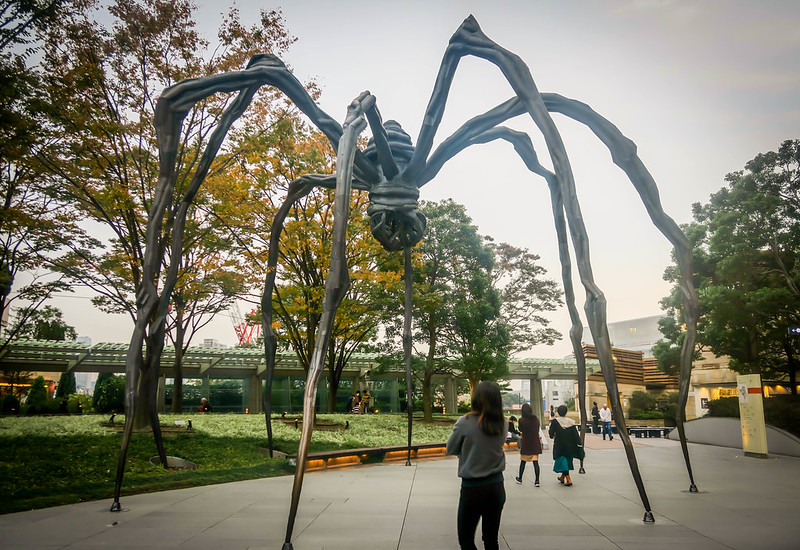
In 1999, French-American artist Louise Bourgeois created Maman, a spider that was sculpted from bronze, stainless steel and marble (for the spider’s eggs). And was created in part of her inaugural commission of The Unilever Series in 2000.
Previously, Bourgeois created “Spider” in 1996 that are featured at the Denver Art Museum, the National Gallery of Art Sculpture Garden in Washington D.C. and the Kemper Museum of Contemporary Art in Kansas City.
But this sculpture is among the world’s largest spider sculpture at 30 ft. high and 33 ft. wideand one can find 26 marble eggs in its sac. One can see it when underneath the spider. And there are six authorized castings of “Maman” in the world.

But the meaning of the spider may seem a bit too dark to be in Roppongi but for those who truly look for why a spider is important to Bourgeois.
The artist explained, “The Spider is an ode to my mother. She was my best friend. Like a spider, my mother was a weaver. My family was in the business of tapestry restoration, and my mother was in charge of the workshop. Like spiders, my mother was very clever. Spiders are friendly presences that eat mosquitoes. We know that mosquitoes spread diseases and are therefore unwanted. So, spiders are helpful and protective, just like my mother.”
And Minoru Mori, developer of Roppongi Hills, spotted the sculpture at the opening of the Tate Modern Museum.
While originally slated for one year, the place has become a fixture in Roppongi Hills and also because of its size and location, it’s become a go-to area when one is trying to meet with someone.
One can easily find Maman near Mori Art Museum.
